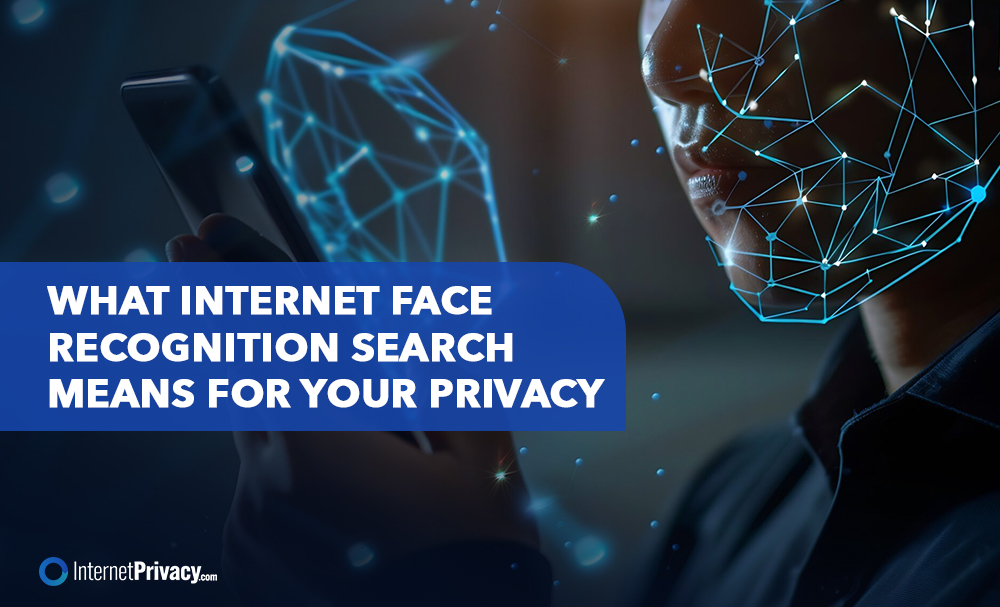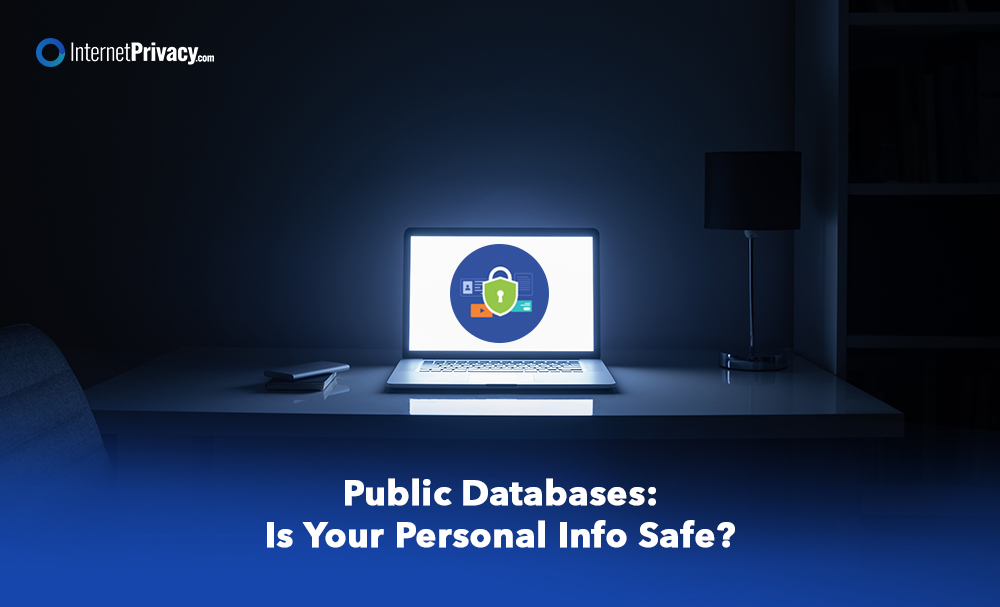What Internet Face Recognition Search Means for Your Privacy

Internet face recognition search technology is reshaping how we interact online. It influences everything from tagging friends on social media to its use in law enforcement, advertising, and security. This exciting technology opens up new possibilities but also brings up serious concerns about privacy, bias, and the ethics of surveillance.
The rise of face search engines, reverse image search engines, and facial recognition technology makes it easier to identify people from images online. However, it also requires us to consider the potential risks involved.
What Is Internet Facial Recognition Technology?
Internet face recognition search is a sophisticated technology that uses advanced algorithms to identify individuals by analyzing their facial features from digital images or video footage. This powerful tool is used in various fields, including law enforcement, security, retail, and public monitoring. It helps find missing persons and prevent crime. However, it also raises significant ethical concerns, especially regarding privacy, data misuse, and potential mass surveillance. These concerns have led privacy advocates to call for more transparency and accountability in using these systems.
Understanding Face Recognition Search Engines
Face recognition search engines are powerful tools that use artificial intelligence (AI) and machine learning algorithms to identify and match faces in images. These search engines can find similar photos, identify individuals, and even track down online profiles. By analyzing an individual’s facial features in an image and comparing them to a vast database of images, face recognition search engines can provide quick and accurate results. This technology has many applications, including law enforcement, security, and social media, making it a valuable resource in our increasingly digital world.
How Does Internet Face Recognition Search Work?
Face recognition involves a complex, multi-step process, including facial detection, landmark identification, and analysis. The identified features are then meticulously matched to a database of known faces, utilizing the largest database of images available.
1. Facial Detection
Facial detection is the initial step in the process, where the technology identifies faces in images or video frames. Using sophisticated machine learning algorithms, the system locates facial features in an uploaded photo or video frame and prepares them for analysis. These techniques ensure the system accurately recognizes faces, even in crowded or complex environments, enabling extended geometric analysis for improved accuracy.
2. Facial Landmarking
Facial landmarking identifies specific points on a person’s face, such as the eyes, nose, and mouth, which help create a unique biometric profile. These reference points are crucial for distinguishing one person from another, especially in applications requiring high accuracy, like law enforcement and identity verification. This step harnesses artificial intelligence to enhance precision and reliability.
3. Facial Analysis
Facial analysis uses these landmark points to create a detailed biometric profile. This step relies on machine learning and neural networks to assess characteristics like the distance between the eyes or the shape of the jawline, improving accuracy and efficiency in identifying individuals. Advanced algorithms ensure that the system can perform accurate image searches even under varying lighting or angles.
4. Facial Recognition
The final step compares the biometric profile against a database to verify identity. By analyzing facial features with advanced algorithms, the system can match a face to known data, even under challenging conditions. This process is crucial for identifying individuals found online and ensuring the technology remains reliable in various applications.
The Role of Artificial Intelligence in Face Recognition
Artificial intelligence is at the heart of face recognition search engines, driving their ability to analyze and match facial features with remarkable precision. AI algorithms meticulously examine the shape of the eyes, nose, and mouth and compare these features to a database image. These algorithms also adjust for lighting, pose, and expression variations, ensuring consistent accuracy. The integration of AI in face recognition search engines enables swift and reliable results, making this technology a crucial tool for applications ranging from security to social media.
Uses of Internet Reverse Image Search Tools
Face recognition technology is utilized across several industries, with applications ranging from social media to law enforcement. Some of the key uses include:
- Social Media Tagging: Social media platforms automatically tag people in photos and videos using facial recognition. This feature enhances user experience by making connecting with friends and family easier. Social media platforms also utilize reverse image search tools to improve user experience by identifying and tagging individuals in photos. However, it also raises concerns about collecting and storing personal data, as users may not fully understand how their information is used or who can access it.
- Law Enforcement: Facial recognition is used in law enforcement to identify suspects, locate missing persons, and enhance public safety. While this technology has proven effective in many cases, it also faces criticism for potentially invading privacy and creating biases in how individuals are profiled. Integrating facial recognition technology with criminal records databases further amplifies these concerns.
- Advertising: Businesses use facial recognition to analyze consumer behavior and personalize advertising. This enables companies to create targeted campaigns based on real-time emotional responses to ads, enhancing engagement and customer loyalty. Businesses can optimize their marketing strategies and drive sales by understanding consumer reactions.
- Real-World Use Cases: These search engines can also find similar photos across various platforms, helping users locate images featuring the same individuals in different scenarios.
Reverse Image Search and Its Applications
Reverse image search is a powerful tool that allows users to search for similar images online. This technology is invaluable for identifying the source of an image, tracking down online profiles, and detecting copyright infringement. Reverse image search engines, such as Google Images, use AI algorithms to analyze an image and match it to similar images in a database. By simply uploading a photo or pasting an image URL into the search bar, users can uncover where an image appears online, find the same pictures, and explore related content, making reverse image search an essential tool for personal and professional use.
Concerns About Internet Face Search Engines
Despite its potential benefits, facial recognition technology raises several concerns, especially regarding privacy, data misuse, and biases.
- Invasion of Privacy: One of the most significant issues is the potential for surveillance without consent. Facial recognition allows for continuous monitoring, which could infringe on personal freedoms, mainly if used without clear regulations or consent from individuals. The lack of oversight in using this technology on publicly available websites exacerbates these concerns. The use of reverse search tools can also lead to privacy invasions, as they allow for the identification of individuals through images uploaded without their consent.
- Biases and Inaccuracies: Facial recognition systems can be prone to biases, especially when trained on unrepresentative datasets. This can lead to wrongful identifications, particularly in marginalized communities, and raise questions about their fairness and accuracy. Addressing these biases is crucial to ensuring the technology is used ethically and responsibly.
- Misuse of Data: Data collected through facial recognition can be misused if proper security measures aren’t in place. Individuals may not be aware of how their biometric information is being stored or shared, leaving them vulnerable to identity theft or discrimination. Maintaining public trust is essential to protecting and using data appropriately.
- Lack of Regulations: There are currently no comprehensive regulations regarding the use of facial recognition technology. This regulatory gap allows companies and governments to use the technology without enough oversight, potentially leading to privacy violations. Advocating for robust legislation is essential to protect individuals’ rights and ensure ethical use of the technology.
- Safety and Security ConcernsMoreover, the technology’s exclusion of content from social media and video platforms limits its comprehensiveness, posing additional challenges.
The Impact on Your Privacy
Face recognition search engines and reverse image search raise significant privacy concerns. When you upload an image to a search engine, it may be stored in a database and used to identify you in the future. Face recognition technology can also track your online activities and pinpoint your location. To protect your privacy, using secure search engines and being cautious when uploading images online is crucial. Understanding these risks and taking proactive steps can help safeguard your personal information from unwanted exposure.
Safety and Security Concerns
Face recognition search engines and reverse image search also present safety and security challenges. These technologies can be exploited to track individuals and determine their location, posing potential risks. Moreover, face recognition technology can create fake profiles and spread misinformation, further complicating the digital landscape. To mitigate these risks, it is essential to use secure search engines and exercise caution when uploading images online. Staying informed and vigilant can help protect you from the potential dangers associated with these advanced technologies.
How Can You Protect Your Privacy?
To safeguard your privacy in an age of pervasive facial recognition technology, there are several steps you can take:
- Limit Social Media Sharing: Be mindful of the information you share on social media. By reducing the amount of personal data available online, you decrease the chances of using it for facial recognition. Consider using privacy settings to control who can see your posts and how your data is managed.
- Use Privacy Settings: Most social media platforms offer privacy settings that allow you to control who sees your posts and how facial recognition interacts with your data. Make sure to review and adjust these settings regularly to enhance your privacy. Use Google Image Search with privacy settings to control how your images are used and shared. This proactive approach can help protect your personal information from unwanted photos being used without your consent.
- Opt-Out of Facial Recognition Databases: Opt out of facial recognition databases whenever possible. Some platforms allow you to remove your data from their systems, helping protect your biometric information from being misused. Staying informed about your options can empower you to take control of your digital footprint.
- Support Privacy Legislation: Advocate for stronger privacy laws that regulate the use of facial recognition technology. Support legislation that promotes transparency and ensures that companies and governments use this technology ethically. By staying engaged in policy discussions, you can contribute to shaping a future where privacy is prioritized.
How InternetPrivacy.com Can Help
InternetPrivacy.com provides the tools and guidance you need to protect your privacy online. With their solutions, you can manage your presence and reduce the chances of unwanted facial recognition searches. They offer easy-to-follow advice on adjusting privacy settings, opting out of facial recognition databases, and keeping up with the latest privacy laws. By using their services, you can take control of your personal information and stay ahead of the evolving technology, all while ensuring your privacy and security.





